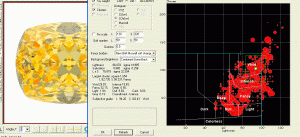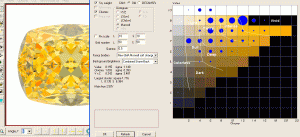- Joined
- Oct 21, 2004
- Messages
- 5,096
I fully agree with Marty Haske and believe the other thread (IDEX Closes News Forum JKD/GIA Stafford Casehttps://www.pricescope.com/community/threads/idex-closes-news-forum-jkd-gia-stafford-case.88950/) should be left to concentrate on the MAIN subject of that specific thread...
So I hope we can continue the issue of what cutting can potentially do for Fancy Colored Diamonds???
Many times while cutting a fancy colored Diamond from rough..., I clearly notice that the color concentration is dependent on the natural skin (and the depth of the skin) of the rough...
The higher the yield..., the more intense the color...., the deeper you cut in the natural rough..., the lighter the color becomes...
Serge..., can your technology identify these types of material? If yes, can it be identified prior to the windowing (or only after)?
So I hope we can continue the issue of what cutting can potentially do for Fancy Colored Diamonds???
Many times while cutting a fancy colored Diamond from rough..., I clearly notice that the color concentration is dependent on the natural skin (and the depth of the skin) of the rough...
The higher the yield..., the more intense the color...., the deeper you cut in the natural rough..., the lighter the color becomes...
Serge..., can your technology identify these types of material? If yes, can it be identified prior to the windowing (or only after)?











300x240.png)